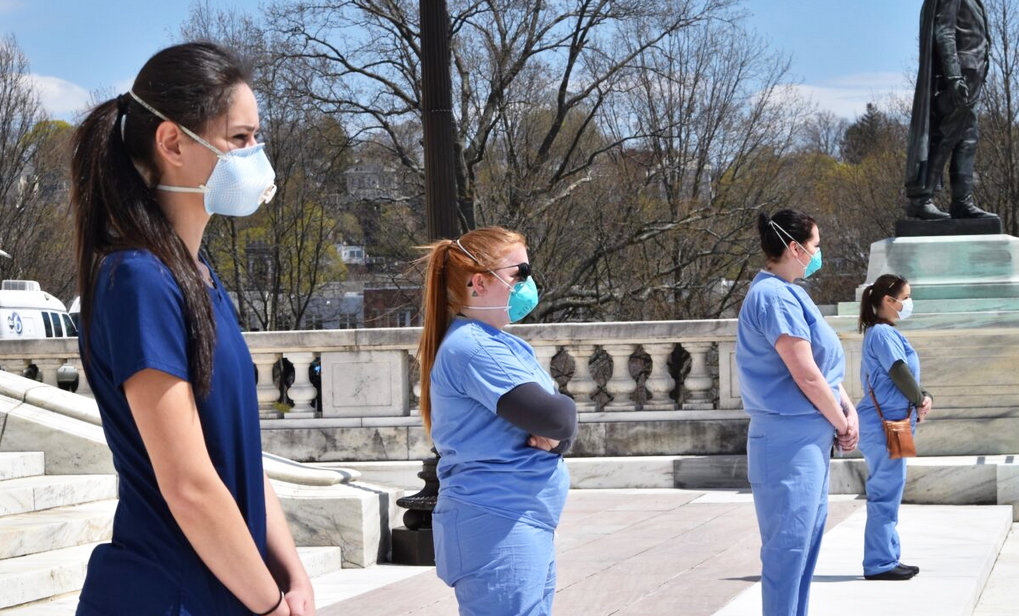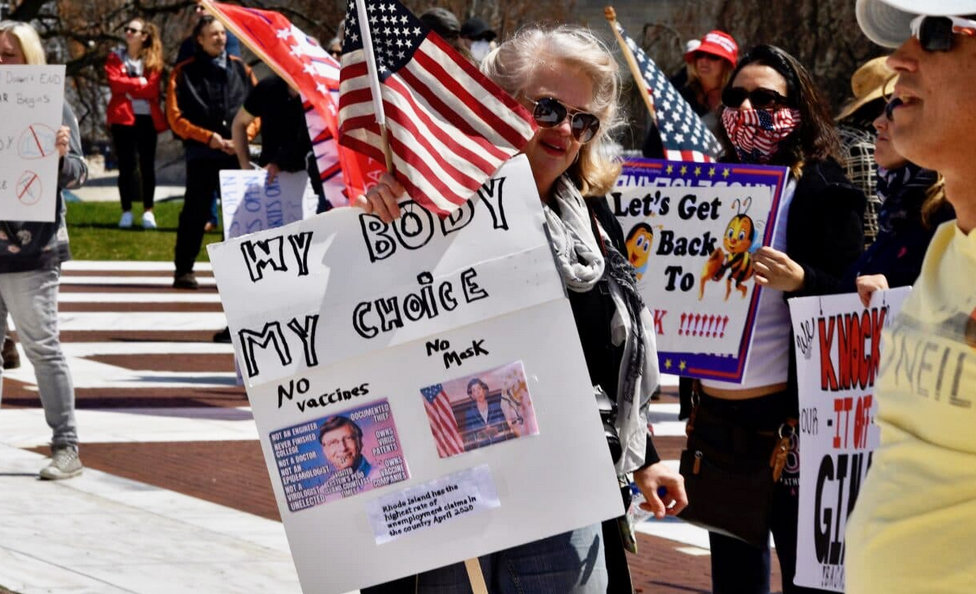Meet the new boss, same as the old boss?
The future world after the pandemic will require a plan that re-envisions the nature of work and the workplace
The larger question, tied to the way that large donors have reshaped our electoral process, is how can voters and citizens reclaim ownership of government from corporate interests and lobbyists.
NEW YORK CITY – Even before these protests against stay-at-home orders have tried to take over the public stage, the widespread effects of coronavirus are already showing us that the workplace will have to change.
But the changes won’t be along the lines of what those protesters are seeking – other than the patchwork approach to re-opening businesses shut down in the name of public safety.
The magical thinking of Trump loyalists and assorted “I-don’t-want-rules” folks holding their public tantrums about stay-at-home orders are going to do nothing to make things safe to go to work – or play – again.
Florida, Georgia, South Carolina and Texas are already lifting some restrictions this week, with no guidance about how one maintains social distancing maintained in a nail salon or barber shop, as examples. Or at a meat-packing plant.
The openings are coming as another 4.5 million workers filed new unemployment claims last week, for a total of more than 26 million.
No re-opening without re-envisioning
The early evidence suggests re-opening without “re-envisioning” is quite dangerous, as we can see in a growing number of meat-packing plants in the Midwest, where isolated cases of contagion are being transformed into inflamed hotspots of hundreds of cases virtually overnight.
And it is happening under the unwatchful eyes of OSHA, the government workplace safety overseers, who, under the Trump administration, are looking the other way, and dumping safety rules.
From a public health viewpoint, it is difficult to see how the chest-thumping for some kind of freedom from common-sense rules is going to keep the infection monster from coming around the corner.
Physical distancing in the workplace
A number of recent articles, commentaries and interviews reflect my thoughts that workplaces introduced to remote operation may well choose to remain that way, that office spaces likely will look to redesign to allow more physical distance among employees once they do return, and that we will need a fresh look at health benefits, sick leave and employee-testing to assure that a return to physical workplaces does not just trigger a new cycle of disease.
One thought that keeps occurring to me is that this pandemic will also prompt companies to move a lot faster towards automation, if for no other reason than robots don’t pick up contagious disease.
But our stumbling as a society and our seeming inability to devise appropriate, effective and humane policies over the handling of the effects of coronavirus gives me serious pause about how well we will deal with the inevitable widespread rollout of automation.
For sure, those protesting in the streets are not looking more than a foot or two into the future, expecting a return to happier working times rather than creation of a new normal.
Consider the images we are seeing on television now about truckers having trouble finding disease-free ways to get their own supplies as they labor around the clock to keep store shelves filled. Or the reports that cleaning employees in police stations and hospitals are being infected in record numbers.
Turning to robots
One clear answer is that it will occur to companies, particularly to companies who receive government bailout money to restart the stalled U.S. economy, to turn to robots to do these jobs in an effort to speed economic recovery – despite rules that are supposed to incent keeping employees on the payroll.
Driverless trucks are already on the proving grounds and are beginning to roll out, and a lot of companies have industrial cleaning robots. Some hospitals have been experimenting with robots that deliver beside drugs, meals or clean.
We have a strange oddity in which disease is getting us to value contributions for those most whose income and working conditions we most have ignored.
America first?
For good or not, even President Donald Trump is saying that the coronavirus is making it easy to see the benefits of more American production of pharmaceuticals and auto parts, the elements of supply lines.
As usual, he is seeing only part of that picture. The virus is also making it easier to see nationwide trucking supply lines that depend on machines rather than humans.
Indeed, how difficult is it to project that our profit-hungry companies will accelerate efforts to re-start markets and supply lines?
My concern is that our seeming repeated governmental disregard for workers and benefits will help business turn away from employees. If American society is baffled about how to handle a month or two of lockdown, how are we going to deal with the effects of widespread and permanent unemployment?
The New York Times did a business section story last week surveying companies that are already moving aggressively towards automation. Industries from recycling to grocery supply companies to fast-food companies, call centers, warehouses and robotics itself are looking to replace humans with machines.
With machines that can be tasked to do specific jobs, like sorting through trash for recyclers, the idea is that employers can devise themselves a disease-free environment for work by machines that do not get sick. Or need health insurance. Or want improvements in working conditions.
Sometimes it is automation replacing cashiers with “contact-less” transactions or more electronic transaction capabilities – even as the risks of hacking and cybercrime is on the rise – or providing translation services.
Some facilities that were looking at getting one or two robots are now saying, ‘We need quite a bit more,’” AMP Robotics’ Matanya Horowitz told The Times. “It’s all moving quite fast.”
Other than Andrew Yang, none of the presidential candidates, including President Trump, have discussed the permanent widespread displacement of workers or what we should be doing about jobs lost to humans. Yang, of course, made such claims the basis of his campaign, calling for monthly basic income payments to all American households exactly to offset the long-term effects of automation.
Replace or augment?
Employers say that robots augment the work by humans rather than replace them. But, increasingly, coronavirus is making us question that.
When Republicans and Democrats in Washington split along familiar party lines about whether to aid companies first or workers first, it underscores the strange fragility we suddenly are finding about the nature of work altogether. We have a government that wants Americans at their jobs so much that we are punishing those who find it necessary to turn to food stamps. We want an economy booming again so much that our government and states are split about whether to risk rekindling a pandemic to make it so.
We have a Labor Department that does not put worker conditions first, a Commerce Secretary who blithely asserts that disease overseas should be good for American companies, a Health and Human Services Department who was overstepped by the president himself on a number of pandemic planning initiatives.
Yes, in its bumbling way, the government will find ways to open narrow parts of the economy, if for no other reason than to get people off suddenly overwhelmed unemployment rolls. But automation is likely to “bend the curve” of re-hiring workers.
We need a “plan, please,” to guide to require that companies expecting to benefit from adding automated production to compensate the workers who are displaced.
Terry Schwadron is longtime writer and editor for The New York Times, The Los Angeles Times and The Providence Journal. He left The Times as a senior editor to work a variety of writing and music projects.







